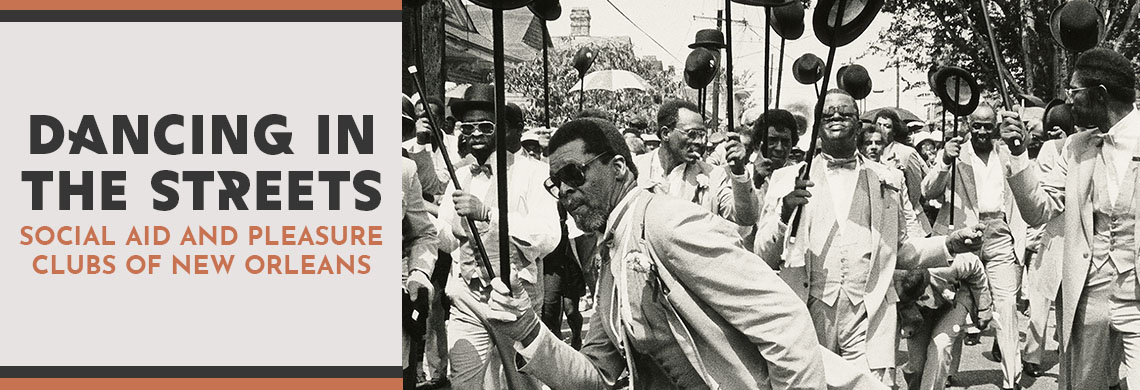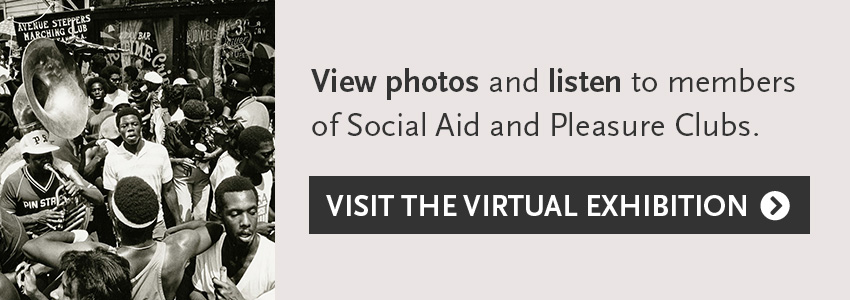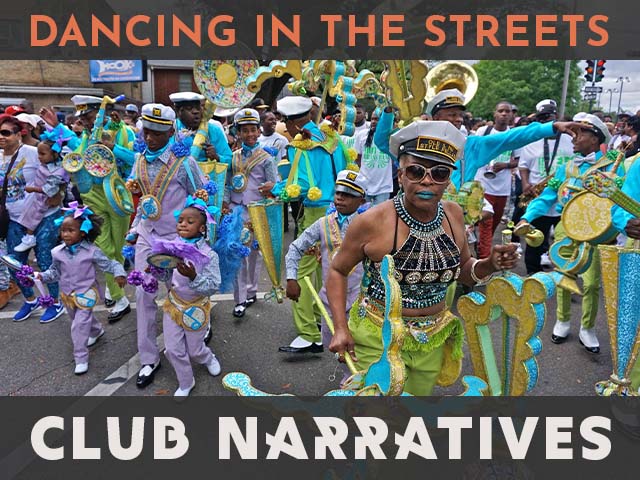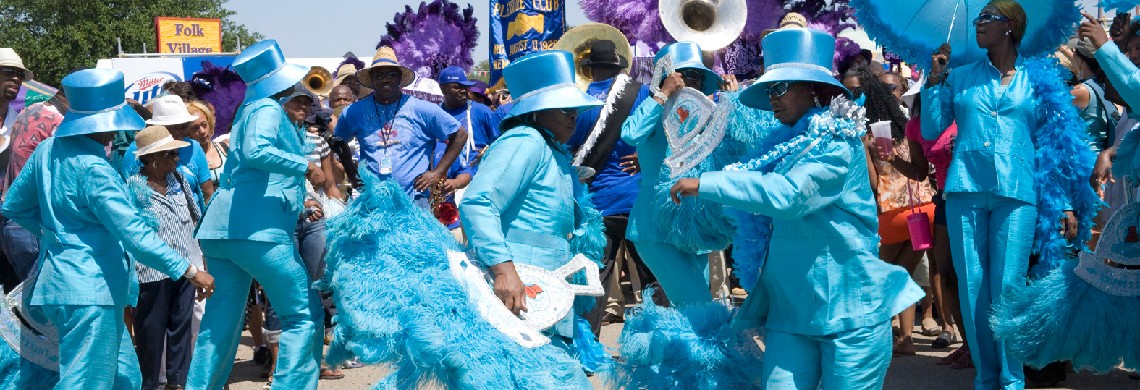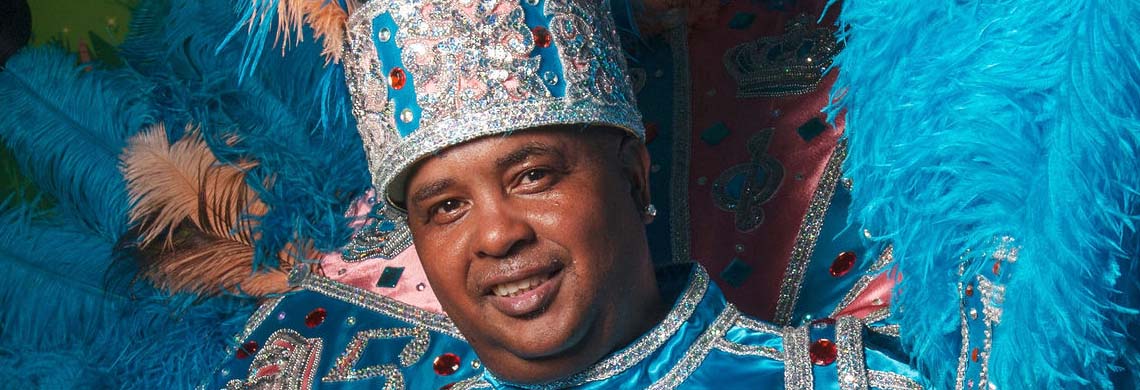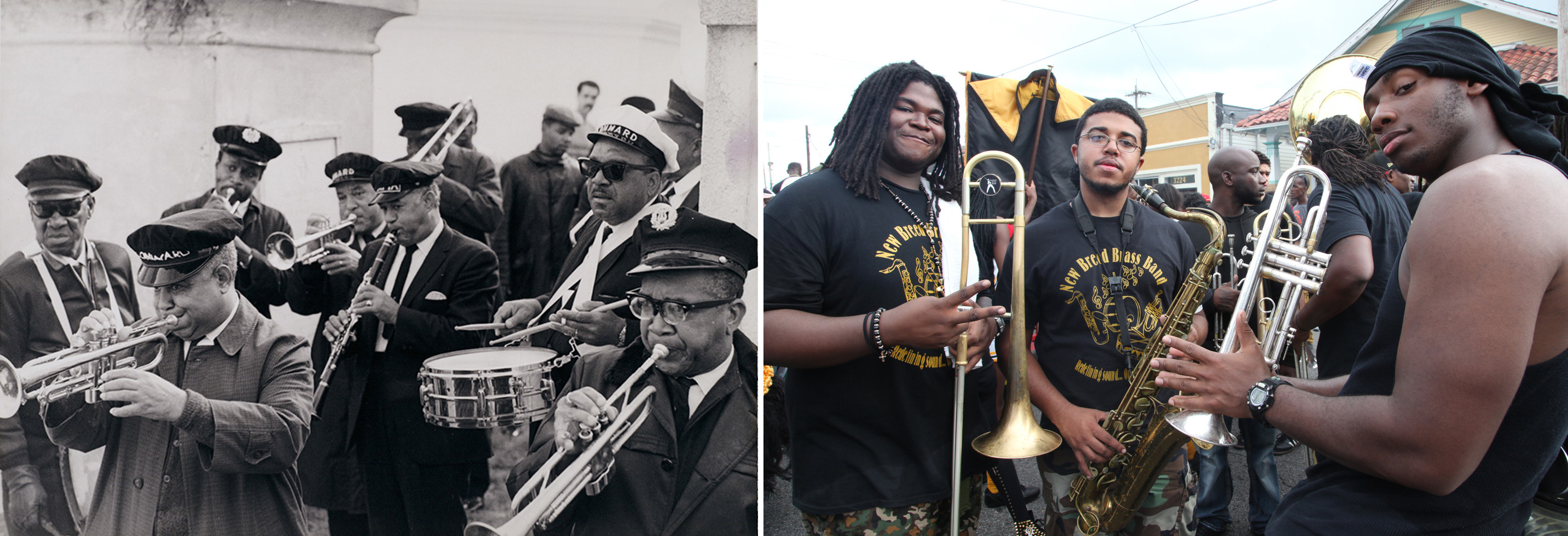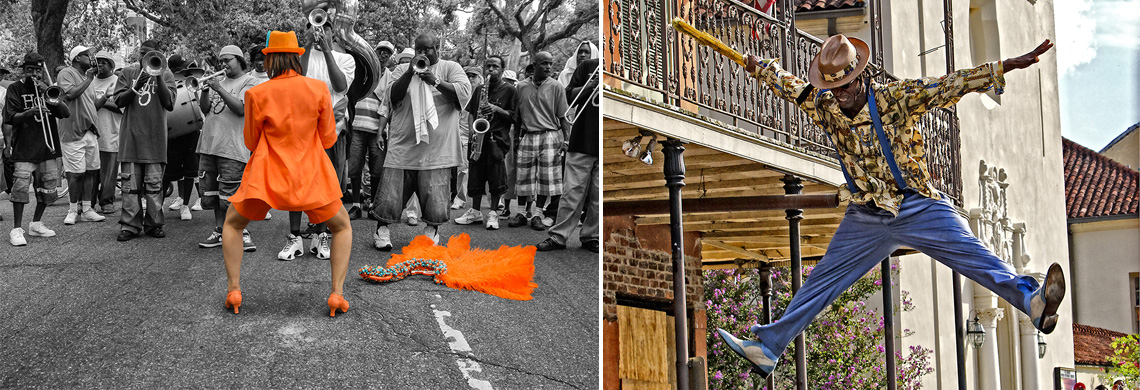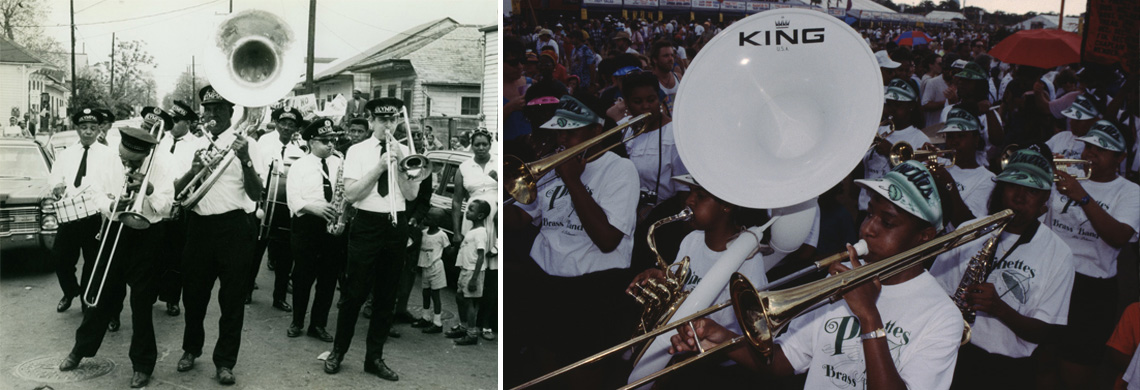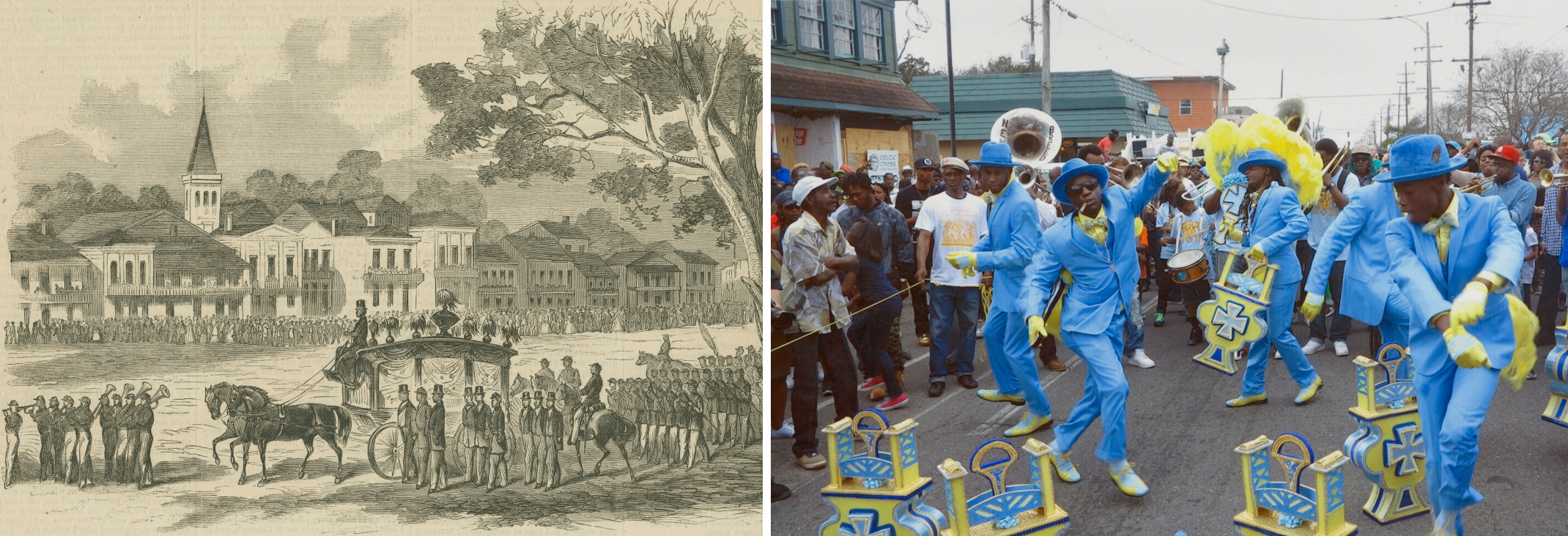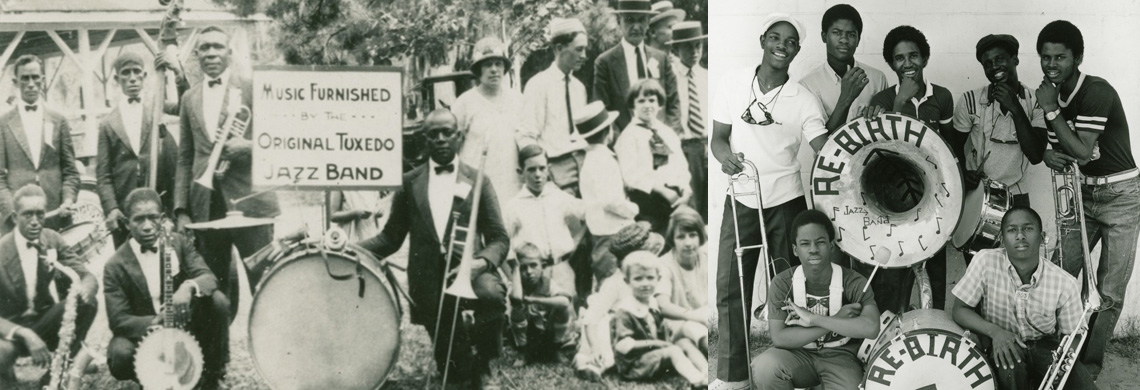Dancing in the Streets: Social Aid and Pleasure Clubs of New Orleans
February 25–June 13, 2021
Tuesday–Saturday, 9:30 a.m.–4:30 p.m.; Sunday, 10:30 a.m.–4:30 p.m.
520 Royal Street, Tricentennial Wing, 3rd Floor
Free ticketed admission
About the Exhibition
For nearly a year, the streets of New Orleans have been empty. Second lines—social aid and pleasure club parades—have been put on hold by the pandemic, marking the longest continuous interruption in a tradition stretching back generations. With origins in Black mutual aid societies founded to support African Americans and Afro-Creoles at a time when they were denied many social services, the clubs and their parades have become one of the city’s defining cultural practices. Full of color and artistry, music and footwork, and friends and neighbors, the parades provide a weekly physical and symbolic gathering place for Black history and expression.
Dancing in the Streets brings together historical photographs and archival footage by Jules Cahn and Michael P. Smith from The Historic New Orleans Collection with contemporary objects collected by the late Sylvester Francis of the Backstreet Cultural Museum and by the late Ronald W. Lewis of the House of Dance and Feathers, as well as from individual club members. Parade regalia—from full suits to elaborate baskets and fans—gives viewers an up-close look at the unique artistry of second line parades.
This artistry is vividly on display in the work of 12 contemporary photographers included in the exhibition: Judy Cooper, Brad Edelman, L. J. Goldstein, Ryan Hodgson-Rigsbee, Pableaux Johnson, Charles Muir Lovell, MJ Mastrogiovanni, Leslie Parr, Akasha Rabut, Vincent Simmons, J. R. Thomason, and Eric Waters. A companion audio guide, created in collaboration with the Neighborhood Story Project, features interviews with club members discussing the objects on display. The Collection is proud to present Dancing in the Streets as a love letter to the social aid and pleasure club community of New Orleans, until the day everyone can hit the streets again
View Images from the Exhibition
About the Book
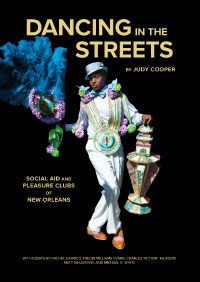 In 2010, longtime second line photographer Judy Cooper began writing about social aid and pleasure clubs—their history, the current scene, and the many ties that bind the tradition. Almost a decade later, the result is Dancing in the Streets: Social Aid and Pleasure Clubs of New Orleans (THNOC 2021), a photographic survey of second line history and practice. Guest essays by leading scholars discuss the parades’ roots in Congo Square; club finery and the people who make it; brass band music and its evolution; and the role of dancing in making second line parades kinetic, collective works of art. Dancing in the Streets profiles all 58 clubs active during the last full second line season (2018–19) and the truncated 2019–20 season. Also included is an epilogue by WWOZ DJ Charles “Action” Jackson, in conversation with club members about the pandemic and the year without second lines. Brimming with images by Cooper and 10 other photographers, including Pableaux Johnson, Eric Waters, and Leslie Parr, this companion publication to the Dancing in the Streets exhibition is a thorough, vibrant survey of social aid and pleasure club history and culture.
In 2010, longtime second line photographer Judy Cooper began writing about social aid and pleasure clubs—their history, the current scene, and the many ties that bind the tradition. Almost a decade later, the result is Dancing in the Streets: Social Aid and Pleasure Clubs of New Orleans (THNOC 2021), a photographic survey of second line history and practice. Guest essays by leading scholars discuss the parades’ roots in Congo Square; club finery and the people who make it; brass band music and its evolution; and the role of dancing in making second line parades kinetic, collective works of art. Dancing in the Streets profiles all 58 clubs active during the last full second line season (2018–19) and the truncated 2019–20 season. Also included is an epilogue by WWOZ DJ Charles “Action” Jackson, in conversation with club members about the pandemic and the year without second lines. Brimming with images by Cooper and 10 other photographers, including Pableaux Johnson, Eric Waters, and Leslie Parr, this companion publication to the Dancing in the Streets exhibition is a thorough, vibrant survey of social aid and pleasure club history and culture.
Related Stories
From the beginning of Jazz Fest, organizer George Wein sought to showcase culture bearers like Mardi Gras Indians and social aid and pleasure clubs alongside musicians. "Dancing in the Streets" author Judy Cooper shares the history of this "heritage on display."
THNOC pays homage to the groundbreaking entertainer and radio host, who passed away in August 2021.
To get the inside story of brass bands and second lines, we talked to THNOC's own Douane Walpes, who tells us what it's like to play for the clubs and second liners on the streets.
Access to capture the intimate action of a second line is earned over beers in favorite club watering holes, in the quieter moments that precede and conclude a parade, and during the kinetic events themselves, where unspoken rules of artistic engagement are observed.
In four videos, we chart the evolution if New Orleans brass bands from their Civil War–era origins up to the modern day.
After the Civil War, benevolent associations flourished in New Orleans's Black community, and so did their impact on life in the city.
Brass bands sprang up in the mid 19th century by playing the popular music of the day. Since then, local bands have incorporated jazz, funk, bebop, and hip hop into their repertoires.

